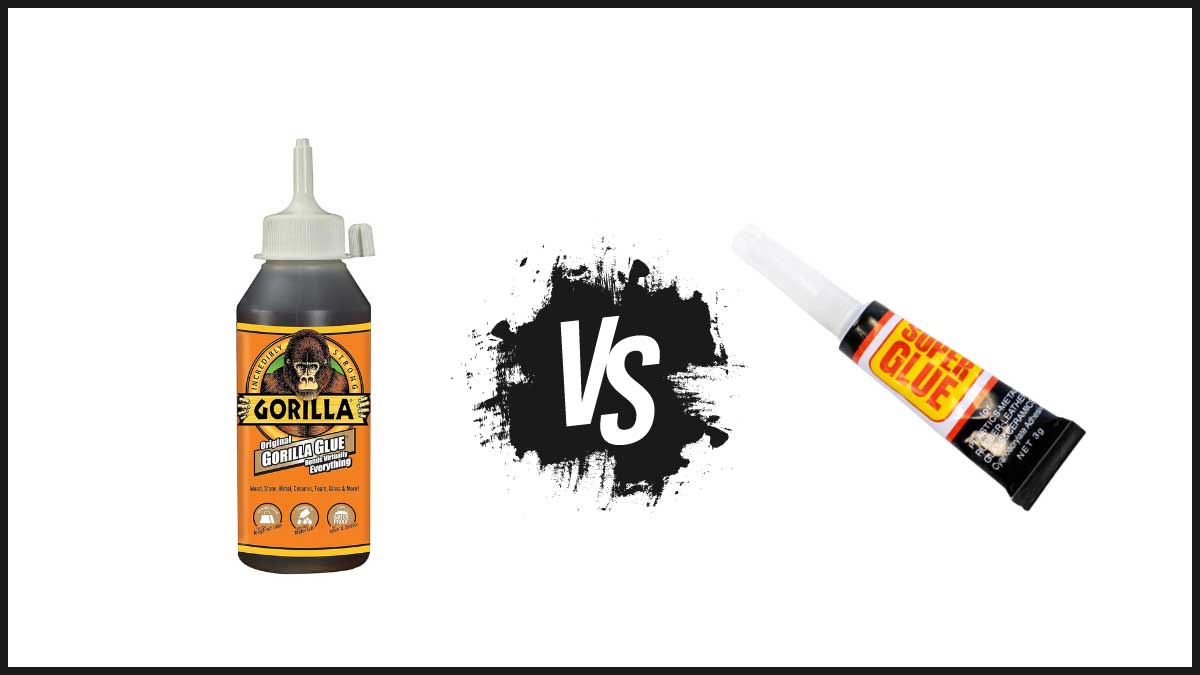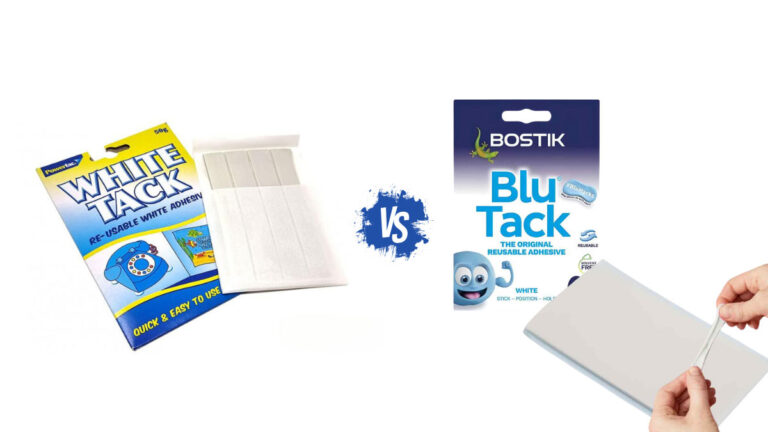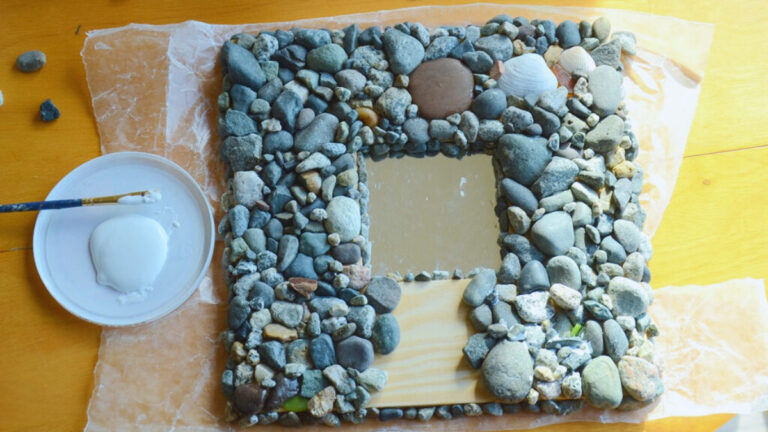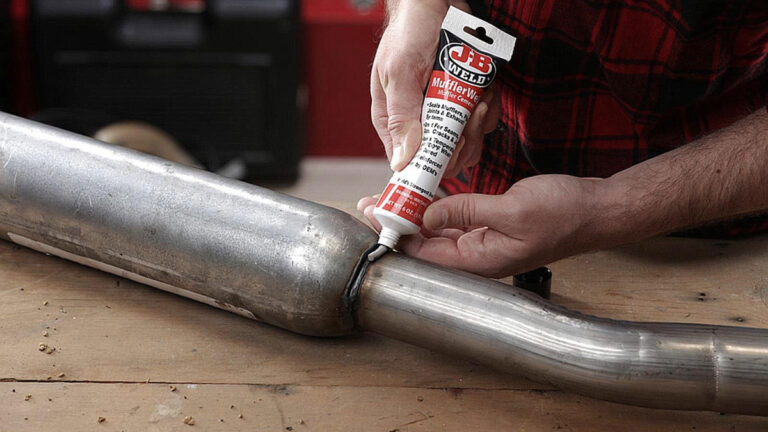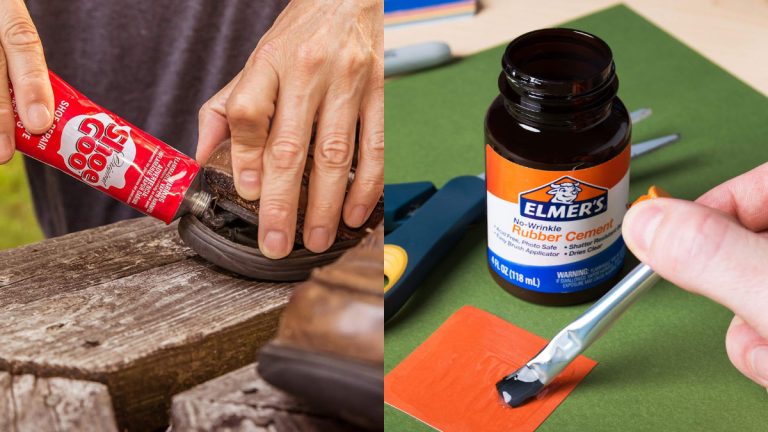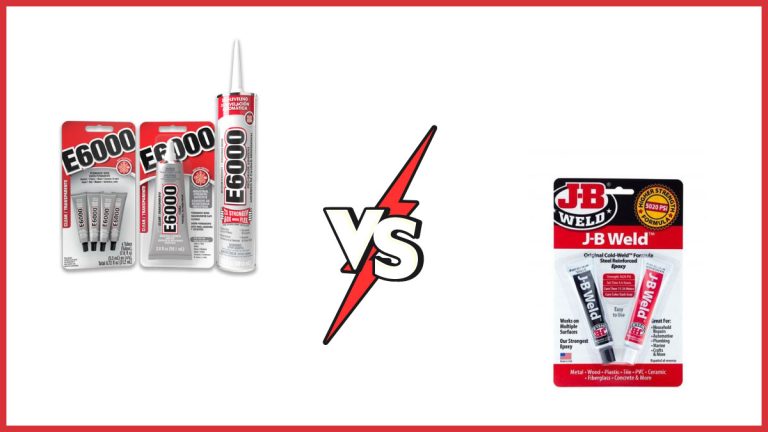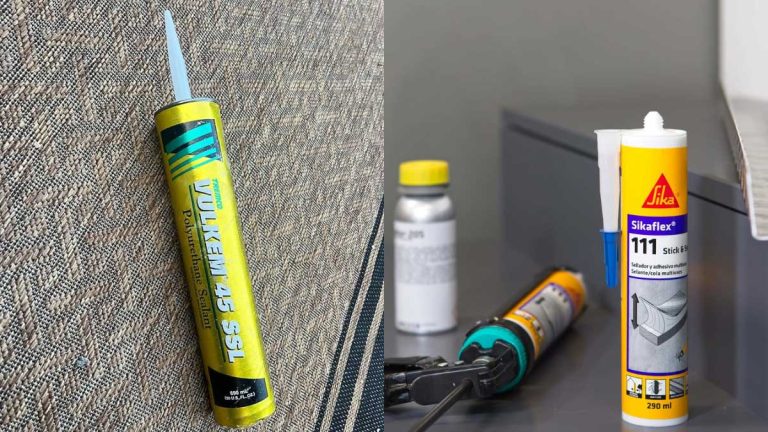Gorilla Glue vs Super Glue: Choosing the Best Adhesive for DIY Projects
When it comes to tackling DIY projects or quick fixes around the house, choosing the right adhesive can make all the difference. Gorilla Glue and Super Glue are two of the most popular options you’ll find on the market, each boasting unique strengths. But which one should you reach for when you need a reliable bond?
Understanding the differences between Gorilla Glue and Super Glue can save you time, money, and frustration. Whether you’re mending a broken chair, repairing a ceramic mug, or crafting a model, knowing which glue to use will ensure your project holds up under pressure. Let’s jump into the specifics so you can make an well-informed choice.
Key Takeaways
- Composition Differences: Gorilla Glue is a polyurethane adhesive, ideal for porous materials like wood, while Super Glue is a cyanoacrylate adhesive, suitable for non-porous surfaces like metal and ceramics.
- Bonding Time and Strength: Gorilla Glue requires around 20 minutes to tack and 24 hours to fully cure, supporting up to 30 pounds. Super Glue sets in 10-45 seconds and holds up to five tons.
- Application Methods: Gorilla Glue necessitates clamping and damp surfaces, expanding during curing to fill gaps. Super Glue is available in liquid and gel forms, requiring clean and dry surfaces for optimal bonding.
- Ideal Use Cases: Use Gorilla Glue for outdoor projects and gap-filling needs, while Super Glue excels in quick indoor repairs and small projects requiring immediate results.
- Temperature and Environmental Suitability: Gorilla Glue is resistant to water and freezings, suitable for both indoor and outdoor applications. Super Glue is primarily for indoor use, with limited resistance to moisture and extreme temperatures.
Overview Of Gorilla Glue And Super Glue
Repair projects often hinge on selecting the right adhesive, and understanding the nuances of Gorilla Glue and Super Glue is essential. Here’s a detailed look at these two bonding agents.
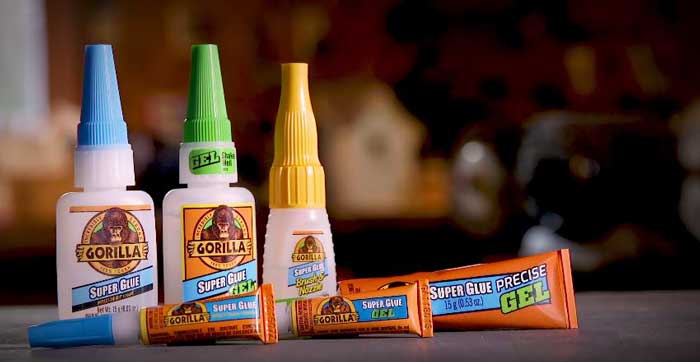
Composition And Type
Gorilla Glue:
- Polyurethane Adhesive: Gorilla Glue is polyurethane-based, making it extremely sticky and thick. Its composition excludes solvents, contributing to its unique sticky texture.
Super Glue:
- Cyanoacrylate Adhesive: Super Glue, including Gorilla Super Glue, relies on cyanoacrylate for quick-setting properties. Unlike polyurethane, it doesn’t require moisture or clamping to activate.
Bonding Time And Strength
Gorilla Glue:
- Initial Tacking: Gorilla Glue’s initial tack takes approximately 20 minutes.
- Full Bonding: It achieves a solid bond within a few hours and fully cures in 24 hours.
- Weight Capacity: It can support up to about 30 pounds.
Super Glue:
- Fast Setting: Super Glue sets in 10-45 seconds and achieves a strong bond within minutes.
- Heavy-Duty Holding: Under optimal conditions, it can hold up to five tons.
| Characteristic | Gorilla Glue | Super Glue |
|---|---|---|
| Composition | Polyurethane adhesive | Cyanoacrylate adhesive |
| Initial Tack Time | 20 minutes | 10-45 seconds |
| Full Bonding Time | Few hours | Minutes |
| Full Cure Time | 24 hours | N/A |
| Weight Capacity | Up to 30 pounds | Up to 5 tons |
Summary Of Key Characteristics
Understanding these properties helps you choose the right adhesive for your project:
- Polyurethane Advantage: Gorilla Glue’s thickness and lack of solvents make it ideal for dense projects.
- Quick Set: Super Glue’s rapid setting time suits fast fixes.
- Load-Bearing: Consider the weight capacity needed; Gorilla Glue handles moderate weights, whereas Super Glue offers significantly stronger bonds.
Action Point
Review your project requirements—material type, bonding time needed, and weight capacity—to select between Gorilla Glue and Super Glue. This ensures effective, efficient results, tailored to your DIY or professional needs.
Adhesive Properties
Choosing the right adhesive can significantly impact the outcome of your project. Let’s jump into the detailed adhesive properties of Gorilla Glue and Gorilla Super Glue.
Chemical Composition
- Gorilla Glue: A polyurethane adhesive. Polyurethane glues react with moisture to form a strong bond, necessitating some moisture to activate.
- Gorilla Super Glue: A cyanoacrylate adhesive. Unlike polyurethane adhesives, cyanoacrylate glues do not require moisture for activation and do not foam during setup.
Setting Time
- Gorilla Glue: Requires approximately 20 minutes for the pieces to start adhering, a few hours to bond, and 24 hours for full curing.
- Gorilla Super Glue: Dries rapidly in 10-45 seconds and doesn’t require clamping.
Service Temperature
| Adhesive Type | Temperature Range |
|---|---|
| Gorilla Glue | Freezing to high temperatures |
| Gorilla Super Glue | -65°F to 220°F |
Bond Strength
Understanding the bond strength of both adhesives helps you choose the right one for your needs.
- Gorilla Glue: Known for its strong hold, it can support up to 30 pounds weight after a full cure.
- Gorilla Super Glue: Even though drying quickly, it boasts an impressive strength, able to hold up to 5 tons.
Versatility
Both adhesives offer robust performance across a wide range of materials but have unique advantages.
- Gorilla Glue: Suitable for outdoor and indoor projects due to its water resistance and ability to withstand extreme temperatures. It’s ideal for porous materials like wood, stone, and ceramic.
- Gorilla Super Glue: Excellent for quick repairs on non-porous surfaces like metal, glass, and plastic. Its fast-setting properties make it perfect for small, rapid fixes.
By understanding these properties, you can effectively select the adhesive that aligns most closely with your project requirements.
Application Methods
Adhesive selection depends on understanding the application methods of Gorilla Glue and Super Glue. Choosing the right method ensures optimal performance for your projects.
Gorilla Glue
- Application: Gorilla Glue is applied directly from the bottle. Suitable for larger projects, it requires clamping or pressure to form a strong bond. The glue foams during curing, useful for filling gaps.
- Surface Preparation: Surfaces must be clean and damp. Moisture activates the glue, aiding the curing process.
Super Glue (Cyanoacrylate)
- Application: Available in both liquid and gel forms. The liquid form wicks into gaps, while the gel form provides better control and prevents drips.
- Surface Preparation: Surfaces should be clean and dry. A small amount of moisture can help cure the glue, but too much can weaken the bond.
Ease of Use
Ease of use involves simplicity and convenience in applying the adhesive.
- Gorilla Glue: Requires correct surface dampening and clamping. Suitable for filling irregular gaps but requires more steps.
- Super Glue: Quick and straightforward. Available in easy-to-use bottles and ideal for on-the-go fixes. The gel form provides more control over application.
Drying Time
Drying time affects the speed of completing your projects and the strength of the bond.
- Gorilla Glue: Takes 20 minutes to tack, fully curing in 24 hours. It supports a weight of up to 30 pounds once cured.
- Super Glue: Sets in 10-45 seconds. Fully cured bonds can withstand up to five tons of force.
| Feature | Gorilla Glue | Super Glue |
|---|---|---|
| Application Method | Direct from bottle, requires clamping | Liquid and gel forms, quick bonding |
| Surface Preparation | Clean and damp | Clean and dry |
| Control | Foams, fills gaps | Gel form for control |
| Drying Time | 20 min tack, 24 hours full cure | 10-45 seconds set time |
| Bond Strength | Supports up to 30 lbs | Holds up to five tons |
Carefully consider the application methods, ease of use, and drying time of both adhesives to select the most suitable one for your specific needs.
Ideal Use Cases
Understanding the ideal use cases for Gorilla Glue and Super Glue ensures you select the right product for your needs. Here’s a deep jump into the specific scenarios where each adhesive excels.
Gorilla Glue
Ideal for:
- Woodworking: Gorilla Glue is perfect for woodworking projects where you need a strong bond. It’s suitable for tasks like building furniture or repairing wooden items.
- Furniture Projects: The adhesive’s ability to expand makes it excellent for fixing gaps in furniture joints.
- Porous Materials: Materials like wood, fabric, and paper benefit from Gorilla Glue’s strong, long-lasting bond. It’s also water-resistant, adding to its durability.
Use Scenario:
- Moisture-Prone Environments: Use Gorilla Glue for projects exposed to moisture, like outdoor furniture, because it withstands wet conditions.
- Gap-Filling Needs: This glue expands as it cures, making it ideal for filling gaps in materials, such as in wood joints.
- Long-Term Projects: The glue sets in approximately 20 minutes and fully cures in 24 hours, making it suitable for projects where time isn’t a constraint.
Gorilla Super Glue
Ideal for:
- Quick Repairs: Gorilla Super Glue is excellent for quick repairs due to its fast-setting nature.
- Small Projects: It’s ideal for small DIY projects requiring immediate results.
- Non-Porous Materials: Works well on materials like metal, ceramic, and most plastics due to its strong bond and quick setting time.
Use Scenario:
- Instant Bonding: Perfect for scenarios where you need an instant, strong bond without clamping. Sets in 10-45 seconds.
- Indoor Applications: Best for indoor projects requiring a quick fix. Not suggested for areas with prolonged exposure to moisture.
- Impact Resistance: Suitable for materials that need to endure light impact after bonding, like certain plastic repairs.
Indoor vs Outdoor
Selecting the right adhesive depends on whether your project is indoors or outdoors.
Gorilla Glue:
- Indoor/Outdoor: Versatile for both environments. Ideal for outdoor furniture, deck repairs, and indoor woodworking.
- Water Resistance: The polyurethane formula offers superior water resistance, making it suitable for outdoor usage.
Gorilla Super Glue:
- Indoor Only: Primarily for indoor use. Not recommended for prolonged outdoor exposure or high humidity areas as it can degrade.
- Quick Fixes: Suitable for quick indoor repairs, like fixing a broken ceramic plate or mending a metallic piece.
Material Compatibility
Ensuring your adhesive matches your material is crucial for a successful bond.
Gorilla Glue:
- Wood: Optimal for bonding wood due to its expanding nature.
- Fabric: Adheres well to textiles for crafting or repairs.
- Paper: Provides a permanent bond suitable for paper crafts or fixes.
Gorilla Super Glue:
- Metal: Bonds quickly and securely to metal surfaces for minor repairs.
- Ceramic: Ideal for fixing ceramic items like decorative pieces or tiles.
- Plastic: Works on most plastics, offering a strong bond for small projects.
| Feature | Gorilla Glue | Gorilla Super Glue |
|---|---|---|
| Setting Time | 20 mins (initial), 24 hrs (full) | 10-45 seconds |
| Ideal Materials | Wood, Fabric, Paper | Metal, Ceramic, Most Plastics |
| Outdoor Suitability | Yes | No |
| Bond Strength | Long-lasting, durable | Strong, impact-resistant |
| Water Resistance | High | Low |
| Use Scenario | Gap-filling, moisture-resistant | Quick fixes, instant bonding |
By understanding these qualities, you can choose the appropriate adhesive for your specific project needs, ensuring strong, durable, and effective results each time.
Pros And Cons
Choosing the right adhesive for your project is essential. While Gorilla Glue and Super Glue are both popular options, understanding their specific advantages and disadvantages can help you make an well-informed choice.
Advantages Of Gorilla Glue
- Water Resistance: Gorilla Glue is highly resistant to water, making it suitable for projects exposed to moisture, like outdoor furniture.
- Porous Materials: This adhesive works well on porous materials such as wood, making it ideal for woodworking and furniture projects.
- Temperature Range: Capable of functioning in temperatures ranging from -65°F to 220°F, Gorilla Glue is versatile for various environments.
- Durability: It forms a robust bond that withstands different environmental conditions, ensuring long-lasting results.
Disadvantages Of Gorilla Glue
- Clamping Time: Gorilla Glue requires a longer clamping time, typically taking 20 minutes to start bonding and 24 hours to fully cure.
- Moisture Requirement: Activation requires moisture, which can be inconvenient in very dry conditions.
- Foaming: The adhesive foams during setup, which can be messy and difficult to manage.
Advantages Of Super Glue
- Quick Setting: Super Glue sets rapidly, usually within 10-45 seconds, making it perfect for quick repairs.
- Non-Porous Materials: This adhesive excels on non-porous surfaces such as metal, ceramic, and most plastics.
- Ease of Use: Available in liquid and gel forms, Super Glue offers better control and quick application for detailed tasks.
- No Clamping Needed: No clamping is necessary, which simplifies the bonding process.
- Limited Exposure Resistance: Super Glue is less resistant to water and temperature changes, making it less ideal for outdoor use.
- Brittleness: Once set, Super Glue can become brittle, which may not be suitable for projects requiring flexibility.
- Limited Material Compatibility: Works less effectively on porous materials like wood, fabric, and paper.
Safety Considerations
Chemical Composition and Fumes
- Gorilla Glue: Composed of polyurethane, Gorilla Glue is non-toxic and doesn’t emit harmful fumes. It’s safe for use around children and pets.
- Super Glue: Unlike Gorilla Glue, Super Glue consists of cyanoacrylate, which emits strong, irritating fumes. Prolonged exposure may lead to sensitization through inhalation and skin contact.
Skin and Eye Contact
- Gorilla Glue: Although non-toxic, Gorilla Glue can still cause minor skin irritation. If contact occurs, remove it by rinsing the area with water thoroughly.
- Super Glue: Quick skin bonding is a risk with Super Glue. If it adheres to skin, rinse with water immediately. Flush eyes with water for 15 minutes if contact happens. If swallowed, avoid inducing vomiting and contact a Poison Control Center or doctor.
- Gorilla Glue: Due to its non-toxic nature, Gorilla Glue has no specific inhalation warnings, ensuring a safer application environment.
- Super Glue: Inhalation of Super Glue fumes can cause respiratory irritation. Ensure adequate ventilation when using this adhesive.
Conclusion
Choosing the right adhesive can make or break your project. Gorilla Glue and Super Glue each have their unique strengths and weaknesses. Gorilla Glue excels in durability and versatility, especially for outdoor and porous materials, while Super Glue shines in quick fixes and non-porous surfaces.
Understanding the specific needs of your project will guide you in selecting the most suitable adhesive. Whether it’s the moisture-activated bonding of Gorilla Glue or the rapid setting of Super Glue, both offer reliable solutions for various tasks.
Consider the material, environment, and required bonding strength to ensure your project’s success. With the right adhesive, you’ll achieve efficient and effective results, saving both time and money.
Frequently Asked Questions
What is the difference between Gorilla Glue and Super Glue?
Gorilla Glue is a polyurethane adhesive ideal for porous materials and outdoor projects, while Super Glue, or cyanoacrylate adhesive, is best for quick repairs on non-porous surfaces like metal and ceramics.
How long does Gorilla Glue take to dry?
Gorilla Glue takes about 20 minutes to initially tack and fully cures in 24 hours. Clamping or applying pressure is recommended during the bonding process.
Can Super Glue be used outdoors?
Super Glue is primarily designed for indoor use. It has limited resistance to water and temperature changes, making it less suitable for outdoor applications compared to Gorilla Glue.
What materials work best with Gorilla Glue?
Gorilla Glue works best with wood, fabric, paper, and other porous materials. It is also effective in moisture-prone environments.
Is Gorilla Glue safe to use around children and pets?
Yes, Gorilla Glue is non-toxic and does not emit harmful fumes, making it relatively safe for use around children and pets. However, it can cause minor skin irritation on contact.
How quickly does Super Glue set?
Super Glue sets very quickly, usually within 10-45 seconds. It does not require clamping, making it ideal for quick fixes.
What are the pros and cons of using Super Glue?
Pros of Super Glue include quick setting time and ease of use. Cons include its brittleness once set and lower resistance to water and temperature changes.
Can Super Glue bond my skin?
Yes, Super Glue can bond skin almost instantly. In case of accidental contact, soak the area in warm, soapy water and gently peel the glue off.
Do I need to prepare surfaces before using Gorilla Glue?
Yes, surfaces should be clean and damp for Gorilla Glue to activate and form a strong bond.
What should I do if I need a bond that can handle high weight?
For high-weight bonds, Gorilla Glue is suitable as it can support up to 30 pounds. Super Glue can also hold up to five tons, making both options viable depending on the project requirements.

